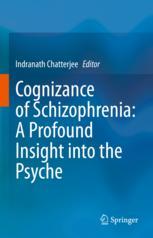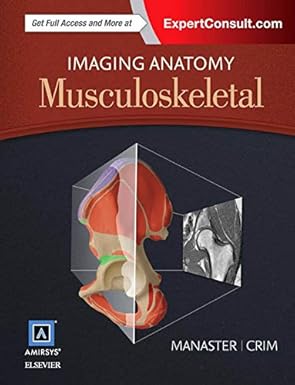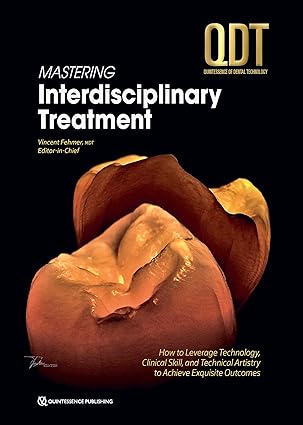When traced back, it was found that cognitive and psychological disorders were reported frequently in history. Symptoms of schizophrenia initially were compared and were confused as dementia and were tossed with the same. However, schizo- phrenia remained an enigma until early 1900. It was Eugen Bleuler who used the word Schizophrenia for the very first time in 1911. Diagnosis and treatment of schizophrenia have been a concern for almost every researcher. Different patients experience different prominent symptoms but the major ones are hallucination, delusion, emotional withdrawal, and cognitive impairment. Depending upon the symptoms schizophrenia is further divided into different types of schizophrenia. There have been constant changes in the treatments and ways to diagnose schizo- phrenia. This chapter introduces the various perspectives of the disorder in all aspects as well as states the recent advancements in all spheres for the diagnosis and treatment of schizophrenia. 1.1 Introduction Psychosis is a characteristic of schizophrenia that is frequently linked with consid- erable impairment and can affect all areas of functioning in personal, familial, social, academic, and occupational settings. People suffering from schizophrenia are regu- larly subjected to stigma, discrimination, and infringement of their human rights. Around the world, every two persons out of three persons experiencing psychosis do not get professional mental health treatment. There are several effective treatment options available, and a minimum of one person out of three persons suffering from schizophrenia may be fully recovered. I. Chatterjee (✉) Department of Computer Engineering, Tongmyong University, Busan, Republic of Korea © The Author(s), under exclusive license to Springer Nature Singapore Pte Ltd. 2023 I. Chatterjee (ed.), Cognizance of Schizophrenia: A Profound Insight into the Psyche, https://doi.org/10.1007/978-981-19-7022-1_1 1 2 I. Chatterjee Approximately 24 million people, or 1 in 300 persons, globally suffer from schizophrenia (0.32%). Adults had a rate of 1 in 222 (or 0.45%) at this time. It is not as common as many other mental diseases. The most typical ages for onset are late teens and early twenties, and males often experience onset sooner than females. Key suffering and impairment in personal, familial, social, academic, occupational, and other significant aspects of life are typically linked to schizophrenia. Schizo- phrenia patients have a two to three times higher risk of dying young than the general population. Physical ailments including viral, metabolic, and cardiovascular prob- lems are frequently to blame for this. When traced back the evidence of schizophrenia was found in the early eigh- teenth century. Different psychiatrists, neurologists, and researchers observed dif- ferent symptoms and suggested different names for the same disorder. Later in the nineteenth century, it was Eugen Bleuler who brought forward the term schizophre- nia. Before him, the strongest arguments were presented by Émil Kraepelin (1856–1927) (Haller et al. 2014a; Kyziridis 2005). He called schizophrenia “demen- tia praecox” based on the symptoms showcased by different patients (Kyziridis 2005). In a similar line, Kurt Schneider in the year 1959 brought forward a new concept named “First-ranked” symptoms. According to him if a person showcases the following symptoms he/she must be diagnosed with schizophrenia (Cutting 2015). • A feeling of one’s thoughts being spoken aloud. • A feeling of control over one’s behavior and actions. • A feeling of thoughts being constantly removed and inserted into one’s mind. • A feeling of influence on one’s thoughts and control. Over the past couple of decades, every month has witnessed research on schizo- phrenia in the field of neurobiology, neurochemistry, neuro-pharmacology, diagno- sis, psychology, and genetics. However, even after such intensive research work, we lack answers to many questions related to schizophrenia. In this chapter, we have compiled data to bring a clear picture of what is schizophrenia.
چکیده فارسی
هنگام ردیابی، مشخص شد که اختلالات شناختی و روانی اغلب در تاریخ گزارش شده است. علائم اسکیزوفرنی در ابتدا با هم مقایسه شد و به عنوان زوال عقل اشتباه گرفته شد و با همان علائم کنار گذاشته شد. با این حال، اسکیزوفرنی تا اوایل سال 1900 یک معما باقی ماند. این یوگن بلولر بود که برای اولین بار در سال 1911 از کلمه اسکیزوفرنی استفاده کرد. تشخیص و درمان اسکیزوفرنی تقریباً برای هر محققی مورد توجه بوده است. بیماران مختلف علائم برجسته متفاوتی را تجربه می کنند، اما عمده ترین آنها توهم، هذیان، کناره گیری عاطفی و اختلال شناختی است. بسته به علائم، اسکیزوفرنی به انواع مختلفی از اسکیزوفرنی تقسیم می شود. تغییرات دائمی در درمان ها و راه های تشخیص اسکیزوفرنی وجود داشته است. این فصل دیدگاه های مختلف این اختلال را در همه جنبه ها معرفی می کند و همچنین پیشرفت های اخیر در همه زمینه ها را برای تشخیص و درمان اسکیزوفرنی بیان می کند. 1.1 مقدمه روان پریشی یکی از ویژگی های اسکیزوفرنی است که غالباً با اختلالات قابل توجهی مرتبط است و می تواند بر تمام زمینه های عملکرد در محیط های شخصی، خانوادگی، اجتماعی، تحصیلی و شغلی تأثیر بگذارد. افرادی که از اسکیزوفرنی رنج می برند به طور مرتب در معرض انگ، تبعیض و نقض حقوق بشر خود قرار می گیرند. در سرتاسر جهان، از هر سه نفری که روانپریشی را تجربه میکنند، دو نفر تحت درمان حرفهای بهداشت روانی قرار نمیگیرند. چندین گزینه درمانی موثر در دسترس است و حداقل یک نفر از هر سه نفر مبتلا به اسکیزوفرنی ممکن است به طور کامل بهبود یابد. I. Chatterjee (✉) گروه مهندسی کامپیوتر، دانشگاه Tongmyong، بوسان، جمهوری کره © نویسنده(ها)، تحت مجوز انحصاری Springer Nature Singapore Pte Ltd. 2023 I. Chatterjee (ویرایشگر)، شناخت اسکیزوفرنی: A بینش عمیق در روان، https://doi.org/10.1007/978-981-19-7022-1_1 1 2 I. Chatterjee تقریباً 24 میلیون نفر یا از هر 300 نفر یک نفر در سراسر جهان از اسکیزوفرنی (0.32%) رنج می برند. در این زمان بزرگسالان دارای نرخ 1 در 222 (یا 0.45٪) بودند. این بیماری به اندازه بسیاری از بیماری های روانی دیگر رایج نیست. معمول ترین سنین شروع، اواخر نوجوانی و اوایل دهه بیست است و مردان اغلب زودتر از زنان شروع می شوند. رنج و آسیب کلیدی در جنبه های شخصی، خانوادگی، اجتماعی، تحصیلی، شغلی و سایر جنبه های مهم زندگی معمولاً با اسکیزوفرنی مرتبط است. بیماران اسکیزوفرنی دو تا سه برابر بیشتر از جمعیت عادی در معرض خطر مرگ در سنین پایین هستند. بیماری های جسمی از جمله مشکلات ویروسی، متابولیک و قلبی عروقی اغلب مقصر این امر هستند. هنگامی که ردیابی شد، شواهدی از اسکیزوفرنی در اوایل قرن هجدهم یافت شد. روانپزشکان، متخصصان مغز و اعصاب و محققان مختلف علائم مختلفی را مشاهده کردند و نام های متفاوتی را برای یک اختلال پیشنهاد کردند. بعداً در قرن نوزدهم، این یوگن بلولر بود که اصطلاح اسکیزوفرنی را مطرح کرد. قبل از او، قویترین استدلالها توسط Émil Kraepelin (1856-1927) ارائه شد (Haller et al. 2014a; Kyziridis 2005). او اسکیزوفرنی را بر اساس علائمی که بیماران مختلف نشان میدهند، «زوال عقل پراکوکس» نامید (Kyziridis 2005). در خط مشابهی، کورت اشنایدر در سال 1959 مفهوم جدیدی به نام علائم "نخستین رتبه" را مطرح کرد. به گفته وی، اگر فردی علائم زیر را نشان دهد، باید اسکیزوفرنی تشخیص داده شود (Cutting 2015). • احساس بلند گفتن افکارش. • احساس کنترل بر رفتار و اعمال خود. • احساس افکاری که دائماً حذف و وارد ذهن فرد می شوند. • احساس تأثیر بر افکار و کنترل خود. در طول چند دهه گذشته، هر ماه شاهد تحقیقاتی در زمینه اسکیزوفرنی در زمینه نوروبیولوژی، نوروشیمی، نوروفارماکولوژی، تشخیص، روانشناسی و ژنتیک بوده است. با این حال، حتی پس از چنین کارهای تحقیقاتی فشرده، ما پاسخی برای بسیاری از سؤالات مربوط به اسکیزوفرنی نداریم. در این فصل، ما دادههایی را گردآوری کردهایم تا تصویر واضحی از اسکیزوفرنی ارائه دهیم.
ادامه ...
بستن ...
Symptoms of Schizophrenia The symptoms observed in patients suffering from schizophrenia are divided into three types (Andreasen and Olsen 1982; Chatterjee and Mittal 2020): • Positive symptoms. • Negative symptoms. • Mixed/cognitive symptoms. 1 Understanding Schizophrenia: Introductory Aspect of the Mental. . . 3 1.2.1 Positive Symptoms The term “positive” does not mean something good, the term positive is referred to the presence of the symptom. Schizophrenia patients experience many changes in their thinking process and lifestyle; however, there are some specific symptoms like auditory and visual hallucination, delusion thought and memory disorders, and even moving disorders which are visible during schizophrenia. Such symptoms are known as positive symptoms of schizophrenia (Andreasen and Olsen 1982; Chat- terjee and Mittal 2020). 1.2.2 Negative Symptoms The term negative here is referred to the lack or absence of normal human thinking trades. The term negative symptom does not mean something bad or wrong they point out the trades that a person suffering from schizophrenia lack as compared to a healthy subject. In comparison with healthy subjects, it was observed that people suffering from schizophrenia show symptoms like lack of pleasure, difficulty in daily life activities, and struggling with thoughts and concentration (Andreasen and Olsen 1982; Chatterjee and Mittal 2020). 1.2.3 Mixed and Cognitive Symptoms There have been cases reported where the patient suffers from both negative and positive symptoms. The patient does not show any prominent symptoms out of positive or negative symptoms. Thus, in such cases, it is said that the patient is reporting mixed symptoms (Andreasen and Olsen 1982; Chatterjee and Mittal 2020). Schizophrenia patients also complain of problems like memory retention and function execution. Such symptoms are termed cognitive symptoms (McCutcheon et al. 2020). 1.3 Causes and Diagnosis of Schizophrenia After decades of continuous research the following parameters are the major causes listed for schizophrenia (Bansal and Chatterjee 2021): • Genetics. • Neurotransmitters. • Drug abuse.
ادامه ...
بستن ...










![Clinical Management of Swallowing Disorders (6th Edition) [2025] - Orginal Pdf Clinical Management of Swallowing Disorders (6th Edition) [2025] - Orginal Pdf](https://dl.libsan.ir/images/1/12/Clinical Management of Swallowing Disorders_68fdc2997972e.webp)